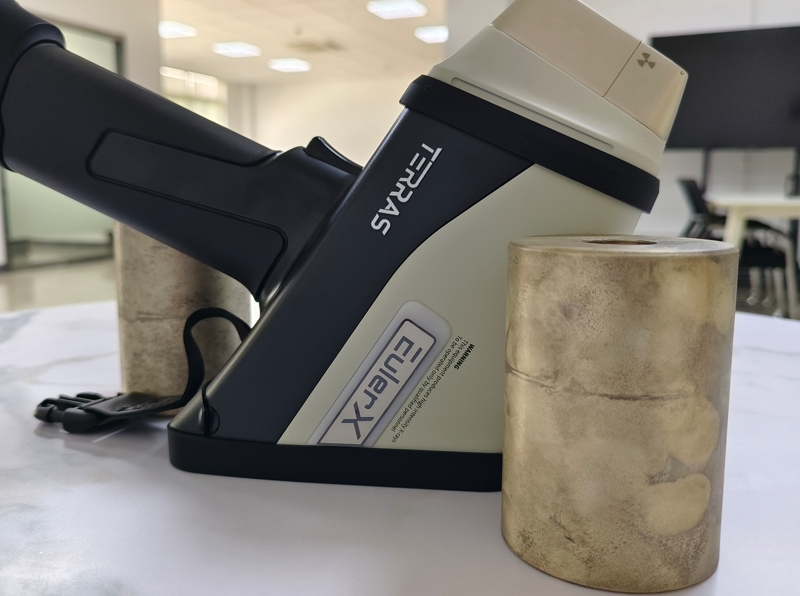
XRF Technology
A high-tech enterprise focusing on the development and application of X-ray technology products, committed to becoming a leading supplier of X-ray industrial testing solutions.
Understanding the Science Behind Hand-Held XRF Analyzers and X-Ray Fluorescence Spectrometry
X-Ray Fluorescence (XRF) Spectrometry is a powerful analytical technique used in a wide range of fields, from environmental science to industrial quality control. This method enables scientists and technicians to determine the elemental composition of a sample without the need for complex sample preparation. With the rise of portable devices, hand-held XRF analyzers have made this technology more accessible than ever before. Let’s take a closer look at how these devices work and the science that powers them.
What is X-Ray Fluorescence (XRF)?
XRF is a non-destructive technique used to analyze the chemical composition of materials. The principle behind XRF is relatively simple: when a sample is exposed to high-energy X-rays, the atoms in the sample absorb the energy. This causes the atoms to become excited and release energy in the form of fluorescent X-rays. The energy and wavelength of these fluorescent X-rays are characteristic of the elements present in the sample, allowing for precise identification and quantification of those elements.
In other words, XRF works by hitting a sample with X-rays, which causes the sample to emit X-rays of its own. By analyzing the emitted X-rays, scientists can determine the elements and their concentrations in the material.

Terras EulerX900 Handheld Alloy Analyzer
How Does a Hand-Held XRF Analyzer Work?
Hand-held XRF analyzers are compact, portable devices designed for on-site testing of materials. The operation of these devices relies on the same basic principles of XRF spectroscopy but is adapted for field use. These analyzers typically consist of several key components:
X-Ray Source: The device contains a small X-ray tube that generates high-energy X-rays. This is the source that interacts with the sample.
Detector: The detector captures the fluorescent X-rays emitted by the sample. It converts the X-ray data into measurable signals, which are then analyzed.
Display/Software: The device is equipped with a display and software that allows users to view the results. The software interprets the data from the detector, identifies the elements, and provides a quantitative analysis of their concentrations.
The hand-held nature of these devices makes them ideal for a range of applications. Technicians and field workers can use them to perform elemental analysis on-site without having to send samples to a laboratory, making the process faster, more cost-effective, and less invasive.
The Science Behind X-Ray Fluorescence Spectrometry
At the heart of XRF spectrometry is the interaction between matter and electromagnetic radiation. When X-rays hit a sample, they can knock electrons out of their orbitals. The energy levels of electrons in atoms are quantized, meaning each element has a characteristic set of energy levels. When an electron is ejected from an atom, it creates a vacancy in the electron shell. This vacancy is filled by an electron from a higher energy level, and the energy released during this transition is emitted as X-rays. These emitted X-rays are unique to the element that released them.
The energy (or wavelength) of these emitted X-rays is what allows scientists to identify the elements in the sample. A detector in the XRF analyzer measures the energy levels of the emitted X-rays and compares them with known energy levels for various elements. The software then produces a spectrum, displaying peaks at the wavelengths corresponding to specific elements.
Advantages of Hand-Held XRF Analyzers
Non-Destructive Testing: One of the major advantages of XRF is that it is non-destructive. Samples do not need to be altered or destroyed during the analysis, which is particularly valuable in industries where preserving the integrity of materials is crucial.
Speed and Efficiency: Traditional laboratory methods can be time-consuming, often requiring days or even weeks to process and analyze samples. In contrast, hand-held XRF analyzers provide immediate results, enabling quick decision-making in the field.
Portability: The compact design of hand-held XRF analyzers allows for easy transport and use in remote locations. Whether it's for checking the purity of precious metals or conducting environmental assessments, the ability to take the device to the sample site is invaluable.
Cost-Effective: Sending samples to a laboratory for analysis can be costly, especially if multiple tests are required. With hand-held XRF analyzers, organizations can save money by performing in-house testing and reducing the need for laboratory fees.
Wide Range of Applications: From mining and metallurgy to environmental monitoring and archaeology, XRF can be applied in many different industries. It is used to test materials like metals, plastics, ceramics, soil, and even ancient artifacts.

Terras EulerX900 Handheld Alloy Analyzer
The EulerX 900 series excels in metal analysis, delivering fast, accurate results across various applications. With advanced electronics and sophisticated algorithms, it ensures high-quality measurements in seconds, making it ideal for non-destructive inspection of incoming materials, finished products, and in-process parts. Its user-friendly touch screen displays alloy grade and chemical composition instantly, requiring minimal training and no sample preparation, regardless of shape or size.
Conclusion
Hand-held XRF analyzers bring the power of X-Ray Fluorescence Spectrometry to the palm of your hand, providing a portable, rapid, and non-destructive means of analyzing the elemental composition of materials. The science behind XRF, rooted in the interaction between X-rays and atoms, allows for precise and reliable results. As technology continues to evolve, the potential applications for XRF will continue to expand, revolutionizing industries ranging from manufacturing and environmental science to archaeology and beyond.
Join Us
Subscribe to our email list for updates & promotions.



